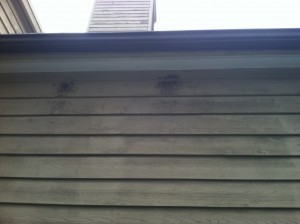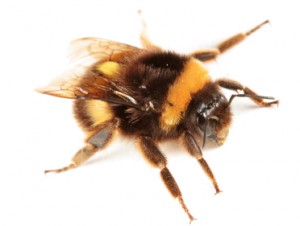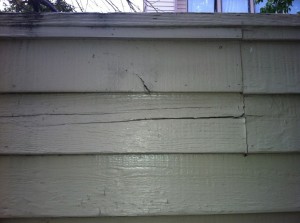Home Maintenance
The Solaridge Cluster houses have a few unique characteristics that require a minor amount of upkeep. Here are some tips that might be useful for you to maintain your home in good condition throughout the year:-
Filters, Vents & Coils
It is recommended to install a good quality air filter for your air-conditioning unit and replace it according to the manufacturers instructions. However you may need to replace the air filter more frequently if you own a pet or suffer from allergies. A more in-depth cleaning of the vents is recommended every 2-3yrs by a professional service provider.
It is also suggested that the vent leading from your clothes dryer be inspected and cleaned out regularly (depending on how often you use your dryer). Lint can build up in the ducting over time and could be a potential fire hazard if not removed.
Homes with subZero refrigerator vents should also be vacuumed on an annual basis to ensure their optimum performance and it is also recommended to have the coil of your heating and air-conditioning unit maintained by a reputable contractor once a year.
Winter/Summer attic fan switch and attic window coverings
Solaridge houses have a unique feature to regulate and utilize heat gathered in the solar attic. Each house has an attic room, which is equipped with two fans, a thermostat and five large vertical windows designed to maximize the flow of light into the room. Here is an explanation of how it works. Winter solar light heats the solar attic air. When the attic temperature attains a temperature set by the house owner, the large fan on the floor of the attic turns on. It exhausts warm air from the attic down through a duct into the living space. Return air from the living space circulates back to the attic through a spring loaded louvered opening in the attic floor. During the summer months when the attic space becomes very hot, the wall mounted fan exhausts hot air from the attic through the attic vent to the outside. You may have noticed that these vents (located beneath the chimney) open on hot summer days to allow this hot air to escape the attic. All houses are equipped with a control switch to enable this summer/winter attic fan operation. The switch is located adjacent to the air-conditioning/heating unit room. Usually the switch can be identified with a W/S marking beside it. W indicates Winter, S Indicates Summer. There is a third setting between W and S. If the switch is set between the two options, neither fan will operate. Occasionally, you might want to disable both fans to perform maintenance, such as lubrication. It is recommended that the attic fan units be lubricated with a light bearing oil once a year, before the start of the summer season. There is a small oil receiving port at the back of each fan for this purpose. This maintenance action should help reduce noise generated by attic fans.
To enhance summer performance, consider installing reflective U.V. resistant attic window coverings that can be opened in the winter. Alternatively, UV film can now be purchased from either Lowes or Home Depot. This film can be easily installed on the inside of windows and significantly helps reduce the amount of Summer heat entering your home.
Carpenter bee activity
Carpenter bees are known for their ability to drill holes through wood and nest in them, hence the name “Carpenter” bees. They do not construct hives and they don’t produce honey. Regularly, they can often be mistaken for bumblebees. Of the four main species of bees in North America, the bumblebee and carpenter bee are of the same size and they do share the same characteristics. Therefore, it can be quite difficult to differentiate the two. The main difference is that bumblebees do not cause much damage to homes compared to carpenter bees. If given enough time, carpenter bees can and will destroy your home
drilling multiple tunnels for potential nesting grounds for their next of kin.
Left untreated, this infestation can potentially cause serious structural damage to your home. Prime locations for holes can be located in unpainted, exposed wood on sidings, window trims, decks, under roofs and even in outdoor furniture. Carpenter bees get their name from their ability to drill through wood and nest in it. You will see round holes and a coarse sawdust-like substance called frass underneath the holes. The holes are perfectly round and are about 3/8 inch in diameter. Treat Carpenter bee nests with the correct insecticides for carpenter bee control. Killing the adult bees is no harder than killing any other flying insects. Any wasp spray such as Wasp Freeze, will kill them, but this short term measure is not the answer to a carpenter bee infestation. By the time the adult bees are seen in any numbers they will have already made and provisioned several brood cavities. The grubs in these cavities will have enough food to develop into the next generation of adults and start the cycle again. It is necessary to poison the carpenter bee nests so not only the adults but the grubs are killed also. Insecticide dusts are best for this because the adult carpenter bees will not recognize the poison and be repelled by it. They will repeatedly travel through the dust and spread it to each brood cell they make thus wiping out two generations. Some bee extermination products for treating the holes are: Drione, Delta dust, Borid, and Carbaryl(Sevin)dust. A dust applicator with a long tube style spout to inject the dust into the holes, will be needed. Leave the treated holes open for a few days so the carpenter bees will spread the insecticides. Then close up the holes with a wood filler (recommend DAP plastic wood solvent wood filler available from Home Depot). It is a good idea to spread a thin layer of the filler across the surface of the wood where the holes have been drilled and paint over to prevent the bees from drilling new holes in the future. Be sure to wear protective gear including goggles when working with poisons and follow all precautions. Carpenter bee extermination is an ongoing process and it will be necessary to check repeatedly every year for new carpenter bee nests to treat. Be sure to also check in the fall for any new holes and treat them with an insecticide before closing them up.
Siding condition
Our homes are constructed with cedar panel sidings. These sidings give the houses their unique appearance, character and cedar aroma. Their correct installation is most important however to ensure an adequate exterior protection to our homes throughout the year. Unfortunately some building contractors have been known to install the sidings incorrectly. They do not nail the sidings to the wooden stud framework, from which the house is constructed. In many cases, contractors have used nail-guns which completely miss the supporting studs resulting in nails floating in mid air, but also splitting the thin siding material horizontally as it is being installed. It is not surprising that after a short time these panels warp and buckle in the heat and cold and allow water to enter behind the sidings. Horizontal splits in the siding lead to water ingress over time.
Small cracks and and splits can and should be filled with an all purpose caulk (suggest DAP Alex painter’s acrylic latex caulk – 25yr durability guarantee) available from either Home Depot or Lowes.
Clearly, it is essential to choose your siding contractor carefully and ensure they know how to install sidings correctly. (Suggested siding contractors are listed in this website). It is also recommended to stain sidings on both sides before they are installed. This treatment will also prevent the sidings from absorbing moisture and minimize warping after drying following a rainfall. A good contractor will provide this advice during their price consultation. It is also recommended to watch out for climbing vines that can grow underneath sidings, which can lead to siding damage. These vines can also invite wasp nests
Repainting Siding – Authorized Colors
The Reston Association has approved cluster standards for paint colors to be used on our homes. They have prepared a binder for members to review and reference in case paints need to be procured.
Downspout drainage
Homeowners are responsible (Reston Association Requirement) for the flow of water from downspouts. All downspouts cannot detrimentally impact any adjacent property or common ground. Any metal extensions from the gutter must be hidden with plant material and not affect neighboring properties. All corrugated pipes must be buried.
Draining external pipes in late Autumn To prevent copper pipes from freezing and bursting during the winter months, it is recommended to drain all external faucets by emptying them in late autumn. Also remember to close the water valve of these external faucets.
Pest control
It is important to control vermin around the exterior of your home. During the early spring, it is recommended to look for signs of the following insects or pests, which may have entered your garage, attic or kitchen, garden/deck:
– ants, carpenter bees, wasps & termites,
– rodents (rats, mice, squirrels, chipmunks),
– racoons & ground-hogs.
If you have discovered a serious infestation, you may need to contact a good contractor to address the issue. This website provides some suggestions.
Home maintenance schedule
The following provides a typical schedule of important items that might require maintenance or maintenance actions in your home throughout the year.
– Spring: Solar Attic, Air-conditioning system (inside and outside house)
– Fall: Solar Attic, heating system, outside faucets drained and winterized
Webmaster contact e-mail: webmaster@solaridgecluster.org



